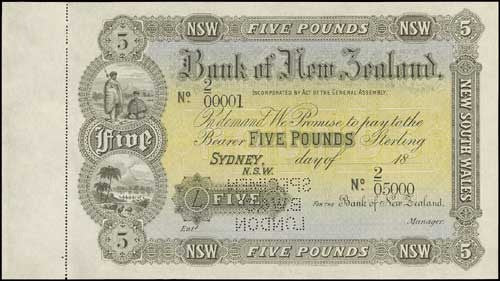Spink has today, (December 10) just completed another sale of World Banknotes in London, and we wanted to bring you some results from it straightaway. Spink have been leading the way with the auctioning of rare collectible currency and was offering the best part of 900 lots.
In the event, some results stayed close to what was predicted and others did not do so by any means.
As expected, a series of specimen notes from the National Bank of Egypt proved to be quite important: There were two £50 notes and two £100 notes and they were all estimated within a £8,000-14,000 range. The oldest was one of the latter from 1899, whilst there was one of each from 1912.
It was the oldest which took top lot status for that section: the £100 note from 15 January 1899, which bears serial number G/1 05001-G/1 10000. Coloured green and black, it displays the temple of the Emperor Trajan (98-117 AD) at Philae on the left.
Perforated SPECIMEN, dated 12th April 1899 in top left margin and in good extremely fine condition, the attractive and extremely rare note brought £11,000 ($17,400).
 Bank of New Zealand banknote |
However, a much more surprising result was a New Zealand banknote. The specimen £5 note, marked Sydney, New South Wales (that's in Australia rather than New Zealand of course) with serial number 2/00001-2/05000, had been estimated at just £2,000-2,500.
Sporting black, blue and pale orange colours with Maoris top left, the note obviously impressed bidders who offered a startling £12,000 ($19,000) for it. Could New Zealand banknotes be a new trend in collectibles? Watch this space for all the current news on banknotes to find out.
- Click here to view our stock items for sale
- Learn how you can get pleasure and profit from rare coins and currency
- Click here for all the latest Coins & Banknotes news
Join our readers in over 200 countries around the world - sign up for your free weekly Collectibles Newsletter today or download our free Collectors News app for your iPhone






